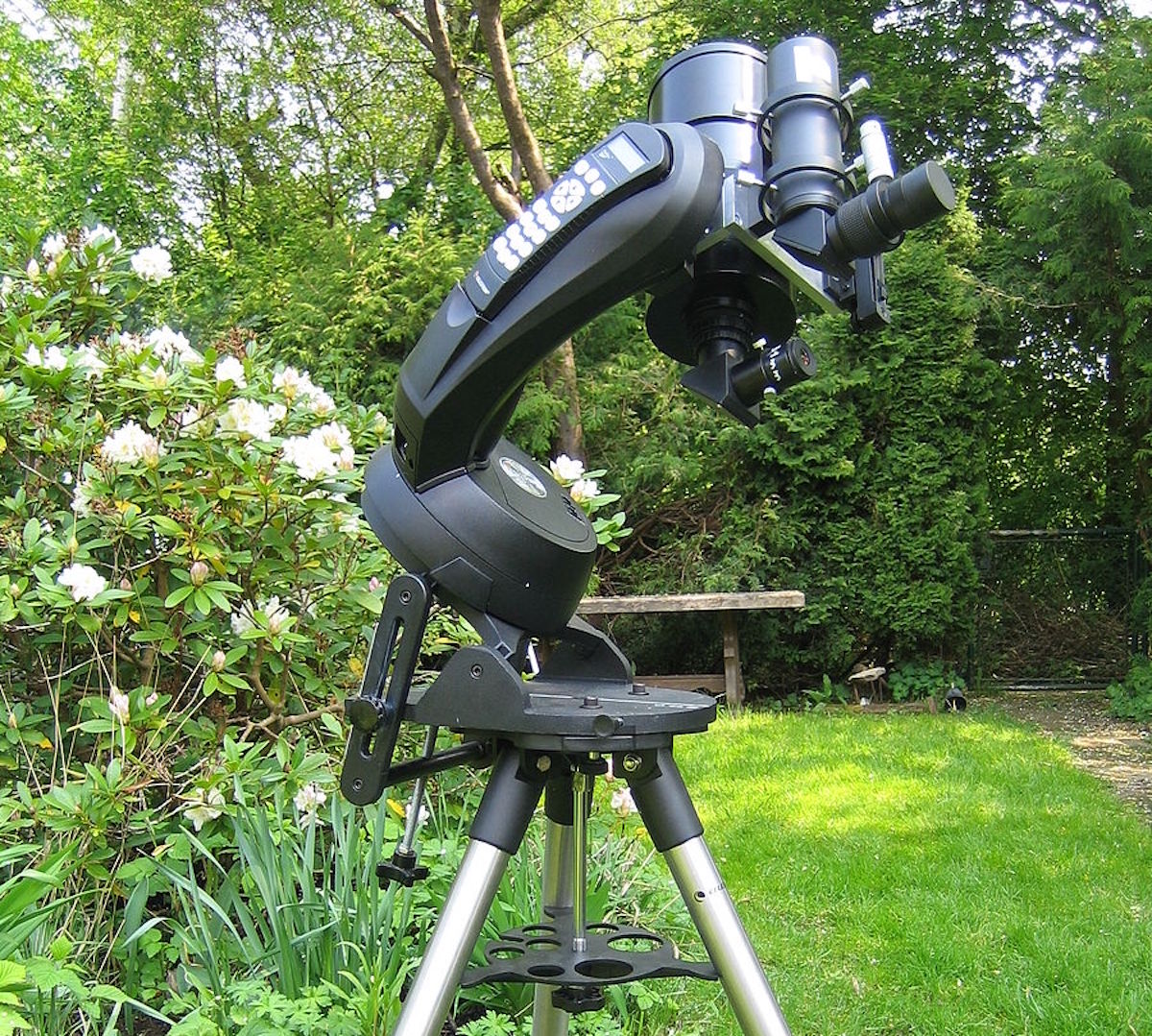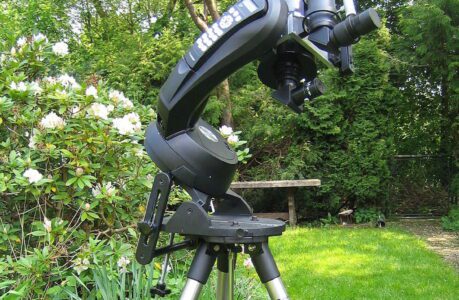For centuries, humans have been fascinated by the night sky. The stars, planets, and galaxies that twinkle above us have captivated our imaginations and inspired countless works of art and literature. Today, thanks to advances in technology, amateur astronomers can explore the universe in greater detail than ever before. One of the most important tools in an amateur astronomer’s arsenal is the GoTo mount.
So what exactly is a GoTo mount? Simply put, it’s a computerised telescope mount that uses GPS technology to automatically locate celestial objects. With a GoTo mount, you don’t need to spend hours scanning the sky to find the object you want to observe. Instead, you simply enter the object’s name or coordinates into the mount’s computer, and it will automatically slew the telescope to the correct position.
GoTo mounts are incredibly popular among amateur astronomers for several reasons. Firstly, they make stargazing much easier and more efficient. Instead of spending hours trying to locate objects manually, you can spend more time actually observing them. Secondly, GoTo mounts are much more accurate than manual mounts. They can track celestial objects with incredible precision, which is especially important for long-exposure astrophotography.
There are several different types of GoTo mounts available, each with their own strengths and weaknesses. Altazimuth mounts are the simplest and most affordable type of GoTo mount. They’re perfect for beginners or anyone on a tight budget. Equatorial mounts are more complex and expensive, but they’re also much more accurate and can track objects as they move across the sky.
When shopping for a GoTo mount, there are a few things you should keep in mind. Firstly, consider the size and weight of your telescope. You’ll need a mount that can support your telescope’s weight and size. Secondly, think about what type of observing you want to do. If you’re mainly interested in astrophotography, you’ll want a mount that can track objects accurately over long periods of time.
In conclusion, a GoTo mount is an essential tool for anyone who wants to explore the night sky in detail. Whether you’re a beginner or an experienced astronomer, a GoTo mount can help you find and observe celestial objects more efficiently and accurately than ever before. So if you’re ready to take your stargazing to the next level, consider investing in a GoTo mount today.
Pros and cons of GoTo mounts
GoTo mounts are a popular tool among amateur astronomers because of their ability to locate celestial objects automatically, saving time and improving accuracy. However, like any technology, there are both advantages and disadvantages to using GoTo mounts.
Pros:
- Time-saving: One of the most significant advantages of GoTo mounts is their ability to save time. Rather than spending hours trying to locate an object manually, users can enter the object’s name or coordinates into the mount’s computer, and the mount will automatically move the telescope to the correct position.
- Increased accuracy: GoTo mounts are more accurate than manual mounts because they use computerised systems to track celestial objects with precision. This is particularly useful for astrophotography, where long exposures are required to capture a clear image.
- User-friendly: GoTo mounts are relatively easy to use, even for beginners. With a little practice, users can quickly learn how to input coordinates and navigate the mount’s menu to find the object they want to observe.
- Versatility: GoTo mounts are compatible with a wide range of telescopes and accessories, making them a versatile option for amateur astronomers.
Cons:
- Cost: GoTo mounts are more expensive than manual mounts, which may be a barrier for some users, particularly beginners.
- Maintenance: GoTo mounts require regular maintenance to ensure their accuracy and functionality. Users must ensure that the mount’s alignment is correct and that the software is up-to-date.
- Power source: GoTo mounts require a power source, such as batteries or an AC adapter, to operate. This may be inconvenient for users who plan to observe in remote locations without access to power.
- Learning curve: While GoTo mounts are relatively user-friendly, they still require a learning curve to master. Some users may find the software and menu systems to be complicated or challenging to navigate.
In conclusion, GoTo mounts offer many advantages for amateur astronomers, such as time-saving, increased accuracy, and versatility. However, they also have some drawbacks, such as cost, maintenance, power requirements, and a learning curve. Ultimately, the decision to use a GoTo mount will depend on the user’s individual needs and preferences.
Are all GoTo mounts suitable for astrophotography
Not all GoTo mounts are suitable for astrophotography. When considering a GoTo mount for astrophotography, it’s important to consider factors such as tracking accuracy, weight capacity, and software compatibility. It’s essential to choose a mount that meets the specific needs of the user’s astrophotography setup to ensure the best possible results. Certain factors must be considered to ensure that the mount is suitable for this type of observation.
One important factor is the mount’s tracking accuracy. For astrophotography, the mount must be able to track celestial objects accurately over long periods of time, often for several minutes or even hours. Any movement or vibrations in the mount can result in blurry or distorted images. Equatorial mounts are typically more suitable for astrophotography than Altazimuth mounts because they can track celestial objects as they move across the sky.
Another factor to consider is the weight and size of the telescope and camera setup. The mount must be able to support the weight of the equipment without any issues. Some GoTo mounts are designed for smaller, lightweight telescopes and may not be able to support larger, heavier setups required for astrophotography.
Finally, the mount’s software and firmware should be suitable for astrophotography. Some GoTo mounts may not have the necessary features or precision for astrophotography, such as being able to guide the mount during long exposures.
Examples of GoTo Mounts
There are many different types and models of GoTo mounts available on the market, ranging from basic models suitable for beginners to more advanced models for experienced astronomers. Here are a few examples of popular GoTo mounts:
Celestron NexStar SE
The Celestron NexStar SE series of telescopes comes with an Altazimuth GoTo mount that is easy to set up and use. The mount has a database of over 40,000 celestial objects, making it ideal for beginners who want to explore the night sky.
Sky-Watcher EQM-35 Pro
The Sky-Watcher EQM-35 Pro is an equatorial mount designed for astrophotography. It can support up to 33 pounds of equipment and has a built-in polar scope for accurate alignment.
Orion Sirius Pro AZ/EQ-G
The Orion Sirius Pro AZ/EQ-G mount is a versatile GoTo mount that can be used for both visual observation and astrophotography. It has a database of over 42,000 objects and can support up to 30 pounds of equipment.
iOptron CEM60
The iOptron CEM60 is a high-end equatorial mount designed for astrophotography. It has a payload capacity of 60 pounds and a built-in GPS for accurate alignment. The mount also has advanced features such as automatic meridian flip and a guide port for autoguiding.
Meade LX85
The Meade LX85 is a GoTo mount designed for intermediate-level astronomy enthusiasts. It has a database of over 30,000 celestial objects and can support up to 33 pounds of equipment. It can be used for both visual observation and astrophotography.
These are just a few examples of the many GoTo mounts available on the market. When choosing a GoTo mount, it’s important to consider factors such as payload capacity, software features, and compatibility with the user’s telescope and camera setup.
Alternatives to GoTo Mounts
While GoTo mounts are a popular tool for amateur astronomers, there are alternative options available for those who prefer a different approach to stargazing. Here are a few alternatives to GoTo mounts:
Dobsonian telescopes
Dobsonian telescopes are simple, yet powerful telescopes that use a basic Altazimuth mount. They are easy to use and set up and are ideal for visual observation. While they don’t have the automatic tracking capabilities of a GoTo mount, they are more affordable and can provide stunning views of the night sky.
Manual equatorial mounts
Manual equatorial mounts require more skill and knowledge to use than GoTo mounts, but they offer a more traditional stargazing experience. These mounts require the user to manually align the mount with the North Star and manually track celestial objects as they move across the sky. They are often preferred by experienced astronomers who enjoy the challenge of finding objects manually.
Astrophotography mounts
If astrophotography is the primary focus, there are specialised mounts available that are designed for this purpose. These mounts offer more precise tracking and can support heavier camera and telescope setups.
Computerised pointing systems
Some telescopes come equipped with computerised pointing systems that use GPS technology to help users locate celestial objects. These systems are not as advanced as a full GoTo mount but can still be helpful for finding objects quickly and accurately.
Ultimately, the choice of mount will depend on the individual’s needs and preferences. While GoTo mounts offer many benefits, they are not the only option available, and other alternatives may better suit certain users’ needs.

